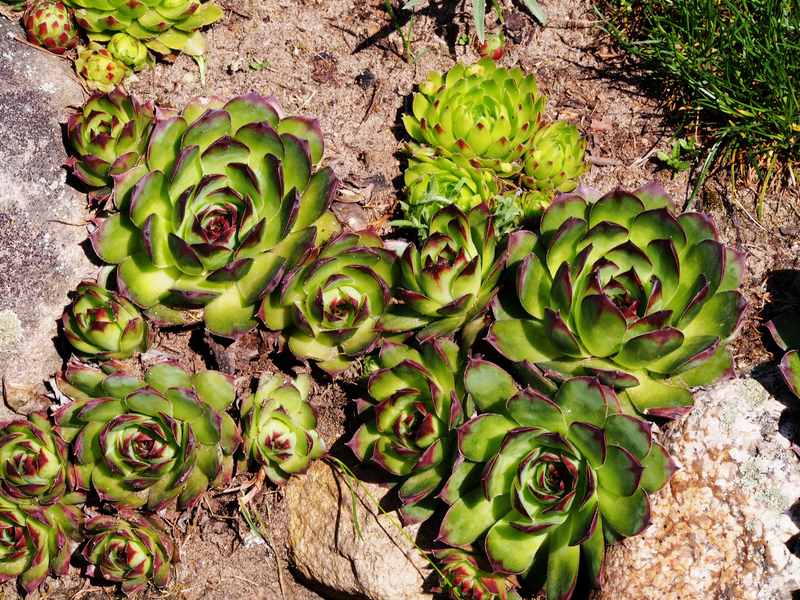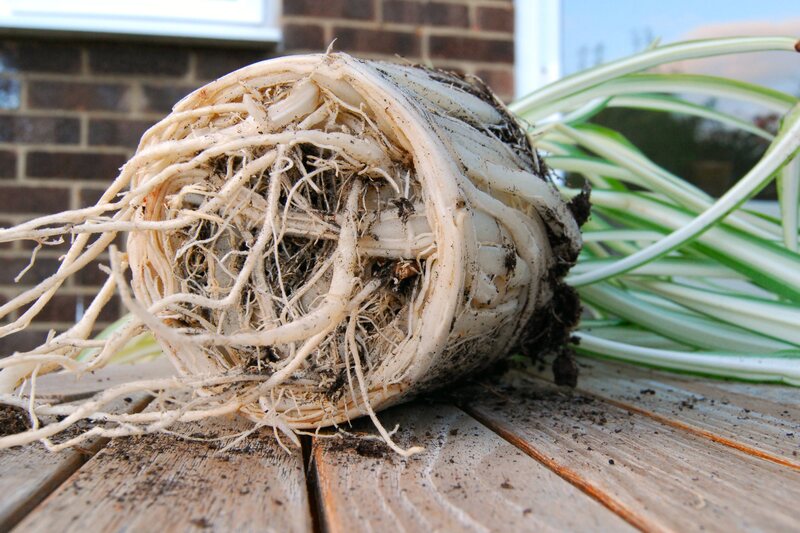Planning a Garden That Sparks Kids' Imagination
Posted on 03/09/2025
Planning a Garden That Sparks Kids' Imagination
A garden can be much more than a patch of earth with flowers and vegetables--it can be a world of wonder, creativity, and adventure for children. Planning a garden that sparks kids' imagination combines playful elements with learning opportunities, creating an outdoor space where curiosity and creativity bloom. Whether you're working with a sprawling backyard or a small urban balcony, the journey towards an enchanting, child-friendly garden begins with purposeful planning and a dash of magic.
Why an Imaginative Garden Matters for Children
Children are natural explorers. Outdoor environments stimulate all the senses, offering experiences that virtual worlds simply can't match. Imaginative gardens provide spaces for discovery, invention, and a connection with nature, contributing to children's intellectual, social, and emotional development. In an era of screens and structured schedules, an inspiring garden can be a sanctuary for wonder and play.
Benefits of a Creative Garden for Kids
- Fosters creativity and problem-solving: Nature presents endless possibilities for imaginative play and critical thinking.
- Encourages learning about science and ecology: Kids watch life cycles, witness pollinators, and learn the basics of biology and responsibility.
- Promotes physical activity: Digging, planting, and running help develop motor skills and healthy bodies.
- Builds confidence and independence: Children take pride in tending their space and seeing tangible results.
- Strengthens family connection: Gardening can become a shared project and lasting memory.

Steps to Plan a Garden That Inspires Children's Imagination
Creating a garden that sparks children's imagination isn't about perfection--it's about designing an interactive and welcoming environment. Here are practical steps to cultivate a magical, kid-approved garden.
1. Involve Kids in the Planning Process
Start the adventure by including kids in brainstorming sessions. Ask questions:
- What would you like to see, touch, or smell in the garden?
- Do you want a secret hideaway, a fairy village, or a jungle path?
- Are there favorite stories or creatures you'd love to see come to life?
Providing children with choices helps them feel a sense of ownership and excitement for the project.
2. Choose the Right Location and Layout
Choose an area that's safe, visible, and easily accessible for little ones. Consider sunlight, soil quality, and proximity to water. If space is limited, container gardens, raised beds, or even vertical gardens can offer plenty of flexibility.
Map out zones for different activities: a place to dig, paths to wander, a quiet corner for reading, or a nook for pretending.
3. Select Plants that Ignite Curiosity
The heart of any imaginative kids' garden is the plant selection. Choose plants that engage multiple senses and stimulate wonder.
-
Sensory Plants
- Touch: Lamb's ear, bunny tail grass, moss
- Smell: Lavender, mint, chocolate cosmos
- Taste: Strawberries, cherry tomatoes, edible flowers (like nasturtiums)
- See: Sunflowers, colorful zinnias, marigolds
- Hear: Bamboo, ornamental grasses that rustle in the wind
-
Curiosity Plants
- Magic beans: Scarlet runner beans, jack beans
- Giant plants: Sunflowers, pumpkins, cardoon
- Unusual edibles: Purple carrots, rainbow Swiss chard, ground cherries
Planting a wildflower patch is an excellent way to attract pollinators and inspire questions about the living world.
4. Add Imaginative Structures and Decor
Let your creativity and resourcefulness shine. Imaginative garden structures can transform even a simple space into a world of pretend and play. Consider adding:
- Willow dens or living tunnels
- Teepees or mini tents made with bamboo and fabric
- Fairy doors, houses, or gnome hideouts in stumps
- DIY stepping stones painted with animals, shapes, or storybook scenes
- Recycled art: Bottle cap flowers, wind chimes, or painted rocks
- A sandbox or "digging patch" for unstructured excavation
- Mud kitchens, water tables, or sensory bins for hands-on fun
*Encourage kids to help design and make garden decorations--personal touches make the garden a truly magical retreat.*
5. Create Inviting Paths and Hideaways
Children love to explore. Winding paths--made from mulch, tree cookies, or stepping stones--invite wandering and discovery. Add low tunnels from arches or bent branches, or plant shrubs in a way that forms nooks and hideouts. Secret spaces like these encourage imaginative play, private reading, or simply enjoying a moment of peace.
6. Attract Wildlife for Learning and Wonder
A lively garden is a fascinating place. By adding features for wildlife, you can turn your garden into a living classroom and spark a lifelong love for the natural world.
- Bird feeders and baths -- Watch feathered visitors up close
- Butterfly host and nectar plants -- Milkweed, parsley, or dill for caterpillars
- Bug hotels -- Simple structures made from bamboo and sticks
- Ponds or container water gardens -- Invite frogs, dragonflies, and water beetles
Encourage kids to keep a garden journal--drawing or noting wildlife, changes in plants, and weather observations to cultivate scientific curiosity.
Design Ideas to Spark Imagination in Children's Gardens
Incorporate stories, themes, and interactive areas to turn your garden into a narrative adventure. Here are some creative ideas to get you started:
Storybook Gardens
- Peter Rabbit's Vegetable Patch: Grow carrots, lettuce, and radishes. Add a small gate and whimsical signs inspired by Beatrix Potter's tales.
- Fairy Tale Forest: Use trees, oversized mushrooms (real or DIY), and winding paths for a magical journey.
- Magic Beanstalk Corner: Let beans climb a tall teepee and plant "giant" sunflowers nearby.
Colorful and Playful Zones
- Rainbow Garden: Plant blooms in color order--red poppies, orange marigolds, yellow sunflowers, green herbs, blue bachelor's buttons, violet petunias.
- Potato Maze: Lay out potato plants or low bushes to form pathways for running and hiding.
- Edible Play Gardens: Encourage snacking while playing--berries, snap peas, mini cucumbers, and cherry tomatoes are all kid favorites.
Mystery and Exploration Features
- Treasure Hunts: Bury "pirate treasure," painted rocks, or small toys. Change the locations often to sustain the adventure.
- Observation Station: Set up a kid-sized explorer's table with magnifiers, journals, and field guides.
- Secret Message Boards: Hang chalkboards or dry-erase boards on fences or trees for drawing and secret messages.
Tips for a Safe and Sustainable Kids' Garden
- Choose non-toxic plants -- Avoid anything that's poisonous or a choking hazard.
- Use natural, organic gardening methods -- Stay away from chemical pesticides or fertilizers.
- Install safe surfaces -- Mulch or grass paths prevent slips; check for sharp objects or splinters.
- Provide shade and seating -- Umbrellas, trees, or simple tents give kids a spot to cool down and rest.
- Teach gentle, respectful care -- Remind kids not to harm wildlife or uproot plants unnecessarily.
- Encourage sustainability -- Involve children in composting, water conservation, and recycling garden materials.
Garden Safety Essentials
- Supervise young children, especially around water features or when using tools.
- Provide age-appropriate gardening equipment with blunt ends and sturdy handles.
- Educate children on which plants are safe to touch or eat--label them if possible.
Gardening Activities to Nurture Creativity
Beyond planting and digging, consider activities that bring out children's creativity in the garden:
- Build fairy or dinosaur gardens in pots: Use small toys, stones, and twigs to create mini worlds.
- Paint plant markers and stepping stones: Let kids design their own markers and art for the garden beds.
- Host a "garden party": Plan picnics, storytelling, or outdoor art and craft sessions in the garden.
- Experiment with homemade bird feeders or bug hotels
- Seasonal nature crafts: Collect leaves, flowers, and twigs for collage, nature crowns, or mobile sculptures.

Tips for Encouraging a Lifetime Love of Gardening
The most important part of designing a garden that sparks kids' imagination is making it fun and low-pressure! Let children explore, make mistakes, and celebrate their discoveries. Here are a few final tips:
- Let kids get dirty and messy--it's part of the fun and learning process.
- Give them real responsibility: Assign simple daily or weekly garden tasks.
- Document the journey: Keep a photo diary or scrapbook of garden adventures.
- Be patient: Gardens and children both grow at their own pace.
- Praise efforts, not just results: Every sprout and idea is worth celebrating.
Conclusion: Where Imagination Blooms
With thoughtful planning, a garden becomes the ultimate playground and learning lab for children. By mixing fairy-tale inspiration, hands-on activities, and sensory-rich plants, you can create a space where children's imaginations soar. A garden that kindles creativity is a gift that grows with your family, offering endless opportunities for play, exploration, and bonding with nature.
Let your child's curiosity and vision lead the way, and your imaginative kids' garden will be a place where magic happens every day.

